* Department of Zoology, Silapathar Science College (P.G.), Assam
Science Technology University, Silapathar, Assam. , India
Corresponding auhor email:jashodeb@gmail.com
Article Publishing HistoryReceived:
Accepted After Revision:
ABSTRACT:The solitary aim of our investigation was to explore the avian species richness in Lumding Forest Reserve area, Assam.The survey was cooperated by the team of Zoological Survey of India. After extended survey, 146 species of birds were spotted from Lumding Forest Reserve area, where birds from 17 different orders (Passeriformes, Columbiformes, Accipitriformes , Piciformes, Bucerotiformes ,Gruiformes, Apodiformes, Coraciiformes, Trogoniformes, Cuculiformes, Galliformes, Ciconiiformes, Suliformes , Pelecaniformes , Strigiformes, Anseriformes, Charadriiformes) and 76 families were put down.
The bird species thus obtained were compared with the IUCN Red list from where interesting cum astonishing facts were acquired. The IUCN Red list informed us that, 92.51% bird species spotted were under Least Concern category, where as 3.4% were Near Threatened, 2.72% were Vulnerable, 0.68% were Critically Endangered and Endangered. We considered ourselves successful for obtaining such astouned statistics about the avian species plentitude of Lumding Forest Reserve, which will provoke other researchers to come forward and explore more about this place.
KEYWORDS:Lumding Forest Reserve Area, Birds, Biodiversity, IUCN
Download this article as: Copy the following to cite this article:Arjun J, Paul R. Avifaunal Abundance of Lumding Forest Reserve Area, Assam, India. Biosc.Biotech.Res.Comm. 2023;16(2).
Copy the following to cite this URL:Arjun J, Paul R. Avifaunal Abundance of Lumding Forest Reserve Area, Assam, India. Biosc.Biotech.Res.Comm. 2023;16(2). Available from: <a href=”https://bit.ly/2U8EBeg“>https://bit.ly/2U8EBeg</a>
INTRODUCTION
Alike other animals, birds too are a remarkable part of ecosystem with amazing ecological values. They cover almost every corner of the planet. Globally there exists around 9000 species of birds of which india contributes 13% with 1300 species (Grimmett et al., 2000). Birds are watcher’s delight, with their colorful appreance and melodious chirping, they not only increase the beauty of nature and provide intangible aesthetic enjoyment; they play many roles in ecosysytem (Watanuki et al.,2022). There exists a strong interdependence between birds and other organisms of this universe.
These warm blooded vertebrates help in pollination; birds like bulbul, parakeets help in seed dispersal; act as scavengers; helps in pest control in crop fields; manages wetland grazing species like snails, periwinkles; acts as proficient gardeners(Beal et al., 2021) . Prior to their sensitiveness to habitat change, birds are considered as one of the most important indicators of environmental change (Pitera et al., 2021). They play significant role in controlling insect outbreak. Birds like Barn Swallow helps in mosquito control by eating around 850 mosquitoes each day (Vinod et al., 2023).
Lumding is a railway town and a municipal board of Nagaon district. It is the regional divisional headquarter of North –Eastern Frontier Railway, a big important junction and famous for Barak Valley Express, Cachar Express, Hill Queen Express, Agartala-Lumding Express, etc., which passes through scenic routes (Pawar and Salunkhe, 2014). It is also famous for cultural and educational excellence.
Initiated in 1964, The International Union for Conservation of Nature’s (IUCN) Red List of Threatened Species has become the most reliable source regarding conservation of floral and faunal species of the earth (Miskelly et al., 2019). It accords information regarding the population, habitat, threats and conservation initiatives that assists us to take necessary steps towards protection. The Red List is an indicator of the exact position of worlds biodiversity (Sauve et al., 2021). It helps to protect natural resources on which we are dependent for survival. Hence, during our investigation, we checked our findings in the Red List to assure their future existence and safety.
METHODOLOGY
Lumding is a hilly landscape which is covered with dense reserve forest from all sides. Summers are burning here as well as winters can be chilling. Monsoon covers rainfall around 60-125mm. The only hill station of Assam i.e. Haflong is very closer to Lumding. Climate remaining favourable for agricultural practices (Arya and Rao, 2014).
Figure 1: Study area map
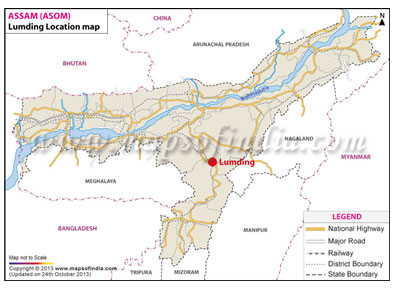
Species density and diversity can be good indicators for measuring abundance of birds in any locality (Javed and Rahmani, 1993). Our survey was carried out from January,2016 to December,2018, where almost all the seasons were covered like Summer (March-June) and Winter (November-March).
For spotting, following methods were preferred,
(1) point count method, (2) direct count method & (3) area search method.
Bird counting was performed from 5.00-8.00 am (morning) and 4.00-6.00 pm (evening). Various species of birds were observed during survey peroid. Observation was performed with the help of field binoculars (10×40). Pictures were captured with Digital Canon EOS 1300D, 18MP DSLR. Renouned Ornithologist Dr. Ghosh and his team from Zoological Survey of India, remained physically present and helped in species identification. Species identification was confirmed with the help of “ Books of Birds of the Indian subcontinent” (Grimmett et al., 2000) and book of Salim Ali “The Book of Indian Birds”, Wikipedia and other resources.
Table 1: Checklist of avian fauna of Lumding Forest Reserve area
SL NO. ORDER FAMILY COMMON NAME SCIENTIFIC NAMEFeeding habits* IUCN Red List (2019-22) status**
1 Passeriformes
Pycnonotidae Red vented bulbul Pycnonotus cafer Nectivorous, Frugivorous, Insectivorous,
Palynivorous
Least Concern 2 Campephagidae Scarlet minivet Pericrocotus speciosus Insectivorous, Carnivorous Ophiophagous Least Concern 3 Oriolidae
Black headed oriole Oriolus larvatus Frugivorous, Insectivorous Least Concern 4 Indian Golden oriole Oriolus kundoo Frugivorous, Insectivorous, Nectivorous Least Concern 5 Pittidae
Black crown pitta Erythropitta ussheri Carnivorous Least Concern 6 Indian pitta
Pitta brachyura Carnivorous, Insectivorous, Least Concern 7 Orididae Maroon oriole Oriolus traillii Insectivorous,, Nectivorous Least Concern 8 Alaudidae
Eastern skylark
( Oriental skylark)
Alauda gulgula Granivorous Least Concern 9 Dicruridae
Racket tailed drongo Dicrorus paradiseus Insectivorous,, Nectivorous Least Concern 10 Black drongo Dicrorus macrocercus Insectivorous, Least Concern 11 Ashy drongo Dicrorus leucophaeus Insectivorous Least Concern 12 Bronzed drongo
Dicrurus aeneus Insectivorous Least Concern 13 Nectariniidae Nepal sunbird Aethopyga nipalensis Nectivorous Least Concern 14 Sturnidae
Hill myna Gracula religiosa Omnivorous , Insectivorous, Frugivorous Least Concern
15 Laniidae
White crowned shrike Eurocephalus anguitimens Insectivorous , Carnivorous Least Concern 16 Bull headed shrike Lanius bucephalus Insectivorous , Carnivorous Least Concern 17 Long tailed fiscal shrike
Larius collaris Insectivorous , Carnivorous Least Concern 18 Leiothrichidae Jungle babbler
Argya striata Insectivorous Least Concern 19 Pycnonotidae
Black headed bulbul Pycnonotus atriceps Insectivorous, Frugivorous Least Concern
20 Hirundinidae
Red rumped swallow Cecropis daurica Insectivorous Least Concern 21 Passeri Fairy blue bird Irena puella Insectivorous, Nectivorous Least Concern 22 Chloropseidae
Gold fronted leafbird Chroropsis aurifrons Omnivorous Least Concern 23 Orange bellied leafbird Chloropsis hard wickii Insectivorous, Nectivorous Least Concern 24
Pycnonotidae Brown eared bulbul Hypsipetes amaurotis Insectivorous, Frugivorous, Nectivorous Least Concern 25 Mectarinidae
Large browed wagtail Motacilla moderaspatensis Insectivorous Least Concern 26 Estrildidae Spotted munia Lonchura punctulata Granivorous Least Concern 27 Black headed munia Lonchura malacca Granivorous Least Concern 28 Ploceidae Baya weaver bird
Ploceus philippinus Granivorous, Insectivorous Least Concern 29 Dicruridae Lesser racket tailed drongo
Dicrurus remifer Insectivorous Least Concern 30 Muscicapidae
White rumped magpie Copsychus malabaricus Insectivorous , Carnivorous Least Concern 31 Sturnidae
Common myna Acridotheres tristis Insectivorous, Granivorous, Carnivorous, Omnivorous Least Concern 32 White headed starling Sturnia erythropygia
Insectivorous Least Concern 33 Brahminy starling Sturnus pagodarum Omnivorous Least Concern 34 Jungle myna Acridotheres fuscus Omnivorous Least Concern 35 Indian Pied myna Gracupica contra Omnivorous Least Concern 36 Motacilladae Yellow wagtail Motacilla flava Insectivorous Least Concern 37 Citrine wagtail Motacilla citriola Insectivorous Least Concern 38 Turdidae
Common black bird Turdus merula Omnivorous Least Concern 39 Vangidae
Indian wood shrike Tephrodornis pondicerianus Insectivorous Least Concern 40 Motacilladae Indian paddy field pipit Anthus rufulus Insectivorous Least Concern 41 Paridae Great tit Parus major Insectivorous Least Concern 42 Alaudidae
Black lark Melanocorypha yeltoniensis Insectivorous Least Concern 43 Sand lark Alaudala raytal Insectivorous Least Concern 44 Corvidae
Jungle crow Corvus culminatus Frugivorous Least Concern 45 House crow Corvus splendens Omnivorous Least Concern 46 Monarchidae Paradise flycatcher Terepsiphone paradisi Insectivorous Least Concern 47 Muscicapidae Blue flycatcher Cyornis tickelliae Carnivorous Least Concern 48 Chloropseidae Leaf bird Chloropsis flavipennis Insectivorous, Frugivorous, Nectivorous Vulnerable 49 Laniidae Brown shrike Lanius cristatus Insectivorous Least Concern 50 Muscicapidae
Shama bird Copsychus malabaricus Insectivorous, Frugivorous Least Concern 51 Slaty backed forktail bird Enicurus schistaceus Carnivorous Least Concern 52 Plumbeous redstart Rhyacornis fuliginosa Insectivorous, Carnivorous Least Concern 53 Leiothrichidae
Grey sibia Heterophasia gracilis Insectivorous, Frugivorous Least Concern 54
Jungle babbler Turdoides striata Insectivorous, Granivorous, Nectivorous Least Concern 55 Common babbler Argya caudata Omnivorous Least Concern 56 White crowned shrike Eurocephalus ruppelli Carnivorous Least Concern 57 Psittaculidae Alexandrine parakeet Psittacula eupatria Omnivorous Near Threatened 58 Laniidae Red breasted parakeet Psittacula alexandri Frugivorous, Granivorous Near Threatened 59 Pnoepygidae
Pygmy cupwing Pnoepyga pusilla Insectivorous Least Concern 60 Pellorneidae Brown capped babbler Pellomeum fuscocapillus Insectivorous Least Concern 61 Marsh spotted babbler Pellomeum palustre Insectivorous Vulnerable 62 Paradoxornithidae Grey headed parrot bill Psittiparus gularis Insectivorous Least Concern 63 Corvidae
Red whiskered bulbul Pycnonotus jocosus Insectivorous, Frugivorous Least Concern 64 Black browed treepie Dendrocitta frontalis Carnivorous Least Concern 65 Passeridae House sparrow Passer domesticus Insectivorous Least Concern 66 Tree sparrow Passer montanus Insectivorous Least Concern 67 Paridae
Oriental tit Parus minor Omnivorous, Molluscivorous Least Concern 68 Anatidae Pin tail duck Anas acuta Granivorous Least Concern 69 Piciformes
Megalaimidae Large green barbet Psilopogon zeylanicus Frugivorous, Insectivorous
Least Concern 70 Coppersmith barbet Psilopogon
haemacephalus
Frugivorous Least Concern 71 PicidaeGolden backed woodpecker Dinopium benghalense Insectivorous Least Concern 72 Large golden backed woodpecker Chrysocolaptes guttacristatus Frugivorous, Insectivorous, Granivorous Least Concern 73 Rufous piculet Sasia abnormis Insectivorous,
Carnivorous
Least Concern 74 Darjeeling pied woodpecker Dendrocopos darjellensis Insectivorous Least Concern 75 Heart spotted woodpecker Hemicircus canente Insectivorous Least Concern 76 Large yellow fronted woodpecker Melanerpes flavifrons Insectivorous, Frugivorous Least Concern 77 Rufous woodpecker Micropternus brachyurus Insectivorous, Frugivorous, NectivorousLeast Concern 78 Bucerotiformes Bucerotidae Grey hornbill Ocyceros birostris Granivorous Least Concern
79 Upupidae Hoopoe Upupa sp Insectivorous , Carnivorous Least Concern 80 Gruiformes Rallidae Coot Fulica atra Omnivorous Least Concern
81 Rallidae
Common moorhen Gallinula chloropus Omnivorous Least Concern 82 Western swamphen Porphyrio porphyrio Omnivorous Least Concern 83 Ardeidae
Little egret Egretta garzetta Carnivorous Least Concern 84 Apodiformes Trochilidae Ruby throated hummingbird Archilochus colubris Insectivorous, Least Concern 85 Accipitriformes Accipitridae
Indian white rumped vulture Gyps bengalensis Carnivorous Critically Endangered 86 Shikra ( Indian shikra) Accipiter badius Insectivorous Least Concern 87 Pariah kite Milvus migrans Carnivorous, Avivorous Least Concern 88 Pied harrier Circus melanoleucos Insectivorous,
Avivorous
Least Concern 89 Crested serpent eagleSpilornis cheela Insectivorous,
Ophiophagous
Least Concern 90 Black winged kite Elanus caeruleus Insectivorous Least Concern 91 Black eared baza Aviceda leuphotesInsectivorous Least Concern 92 Changeable hawk eagle Nisaetus cirrhatus Avivorous Least Concern 93 Crested serpent eagle Spilornis cheela Carnivorous, Avivorous, Carnivorous Least Concern 94 White tailed eagle Haliaeetus albicilla Carnivorous Least Concern 95 Columbiformes Columbidae Spotted dove Stiloopelia chinensis Frugivorous, Granivorous, Insectivorous Least Concern 96 Ring necked dove Streptopelia capicola Frugivorous, Granivorous, Insectivorous Least Concern 97 Emerald dove Chalcophaps indica Frugivorous Least Concern 98 Red turtle dove Streptopelia tranque baricha Granivorous, Least Concern
99 Green imperial pigeon Ducula aenea Granivorous Near Threatened 100 Rock pigeon Columba livia Granivorous, Frugivorous, Insectivorous Least Concern
101 Imperial pigeon Dacula sp Frugivorous Least Concern 102 Spotted dove Spoilopelia chinenois Insectivorous Least Concern 103 Coraciiformes
Meropidae
Chestnut headed bee eater Merops leschenaulti Insectivorous Least Concern
104 Green bee eater Merops orientalis Insectivorous , Carnivorous Least Concern 105 Alcedinidae
White breasted kingfisher Halcyon smyrnensis Insectivorous , Carnivorous Least Concern 106 Common kingfisher Alcedo anthis bengalensis Carnivorous, Insectivorous, Piscivorous Least Concern 107 Trogoniformes Trogonidae
Red headed trogon Harpactes erythrocephalus Insectivorous Least Concern 108 Cuculiformes
Cuculidae Crow pheasant Centropus sinensis Carnivorous Least Concern 109 Asian koel Eudynamys scolopaceus Omnivorous Least Concern 110
Galliformes
Phasianidae
Black francolin Francolinus francolinus Insectivorous Least Concern 111 Grey partridge Perdix perdix Insectivorous, Granivorous Least Concern 112 Jungle bush quail Perdicula asiatica Frugivorous , Granivorous Least Concern 113 Red jungle fowl Gallus gallus Frugivorous Least Concern 114 Kalij pheasant Lophura leucomelanos Omnivorous Least Concern 115 Dicacidae Plain coloured flower pecker Diacacum minullum Frugivorous, Nectivorous Least Concern 116 Pycnorotidae Black bulbul Hypsipetes leucocephalus Insectivorous, Granivorous Least Concern 117 Ciconiiformes Ciconiidae
Greater adjutant Leptoptilos dubius Omnivorous,
Carnivorous
Endangered 118 Lesser adjutant Leptoptilos javanicus Omnivorous,Carnivorous, Piscivorous
Vulnerable 119 Black necked stork Ephippiorhynctus asiaticus Carnivorous Near Threatened 120 Scaly breasted stork Anastomus oscitans Carnivorous, Molluscivorous Least Concern 121 Suliformes
Phalacrocoracidae
Little cormorant Microcarbo niger Carnivorous Least Concern 122 Large cormorant Phalacrocorax carbo Carnivorous Least Concern 123
Indian cormorant Phalacrocorax fusicollis Carnivorous Least Concern 124 Anhingidae Darter Anhinga sp Piscivorous
Near threatened 125 Pelecaniformes
Ardeidae
Great egret Ardea alba Carnivorous Least Concern 126 Medium egret Ardea intermedia Carnivorous Least Concern 127 Cattle erget Bubulcus ibis Carnivorous Least Concern 128 Yellow bittern Ixobrychus sinensis Carnivorous Least Concern 129 Chinese pond heron Ardeola bacchus Carnivorous Least Concern 130 Indian pond heron Ardeola grayii Carnivorous Least Concern 131 Night heron Nycticorax nyctanassa Insectivorous,
Avivorous,
Piscivorous
Least Concern 132 Bittern Botaurus stephens Carnivorous Least Concern 133 Tiger heron Tigrisoma lineatum Carnivorous Least Concern 134 Strigiformes StrigidaeJungle owlet Glaucidium radiatum Insectivorous Least Concern 135 Brown fish owl Ketupa zeylonensis Piscivorous Least Concern 136 Tytonidae Barn owl Tyto alba Carnivorous Least Concern 137 Anseriformes
Anatidae Common pochard Aythya ferina Molluscivorous, Insectivorous Vulnerable 138 Lesser whistling duck Dendrocygna javanica Gregarious Least Concern 139 Brahminy duck Tadorma ferruginea Omnivorous Least Concern 140 Charadriiformes jacanidae
Pheasant tailed jacana Hydrophasianus chirurgus Insectivorous, Molluscivorous Least Concern 141 Bronze winged jacana Metopidius indicus Insectivorous Least Concern 142 Charadriidae
Red wattled lapwing Vanellus indicus Insectivorous, Granivorous,
Molluscivorous
Least Concern 143 Spur winged lapwing Vanellus spinosus Insectivorous Least Concern 144 Laridae River tern Sterna aurantia Insectivorous,Piscivorous
Vulnerable 145 Indian robinSaxicoloides fulicatus Insectivorous Least Concern 146 Scolopacidae
Long toed stint Calidris subminuta Insectivorous, Molluscivorous, Granivorous Least Concern
*Piscivorous: fish eater birds; Palynivorousbirds: pollen eater birds; Nectivorous: necter eater birds; Ophiophagous: snake eater birds; Mucivorous: mucus eater birds; Molluscivorous: mollusce eater birds; Granivorous: grain eater birds; Frugivorous: fruit eater birds; Carnivorous: meat eater birds; Avivorous: bird eater birds.
**Extinct in the wild (EW) – Known only to survive in captivity; Extinct (EX) – No known individuals remaining; Critically Endangered (CR) – Extremely high risk of extinction in the wild; Endangered (EN) – High risk of extinction in the wild; Vulnerable (VU) – High risk of endangeredment in the wild; Near Threatened (NT) – Likely to become endangered soon; Least Concern (LC) – Lowest risk. Does not qualify for a more at risk category; Data Deficient (DD) – Not enough data to assess its risk of extinction; Not Evaluated (NE) – Has not yet ben evaluated against the criteria.
Figure 2: Graphical representation showing order wise abundance
of avian fauna in Lumding Forest Reserve area
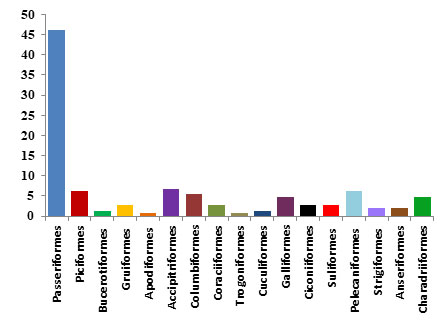
Figure3: Graphical representation showing IUCN status of avian
fauna spotted in Lumding Forest Reserve area
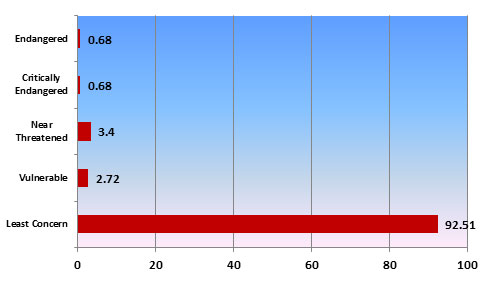
Figure4: Pictures of some birds spotted from Lumding Forest Reserve area
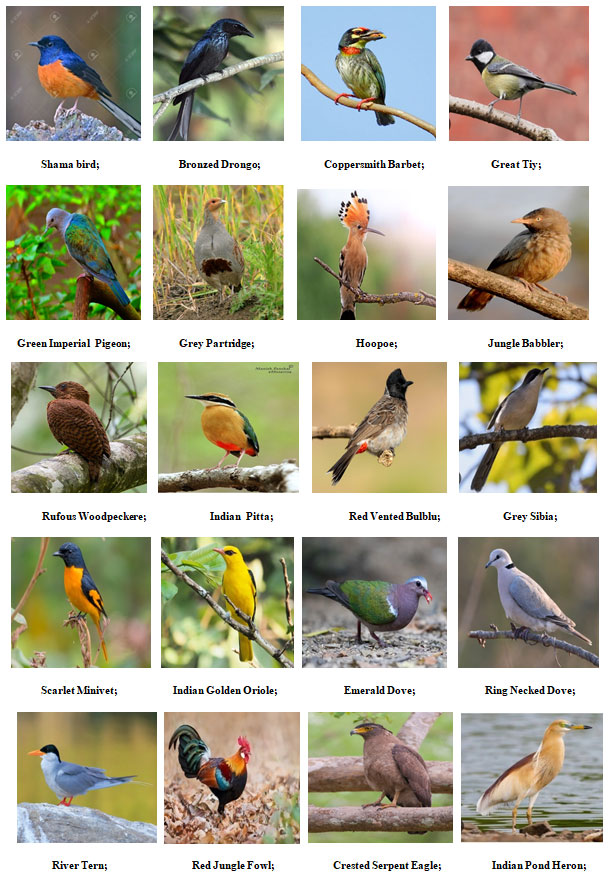
Figure 5: Pictures of some birds spotted from Lumding Forest Reserve area
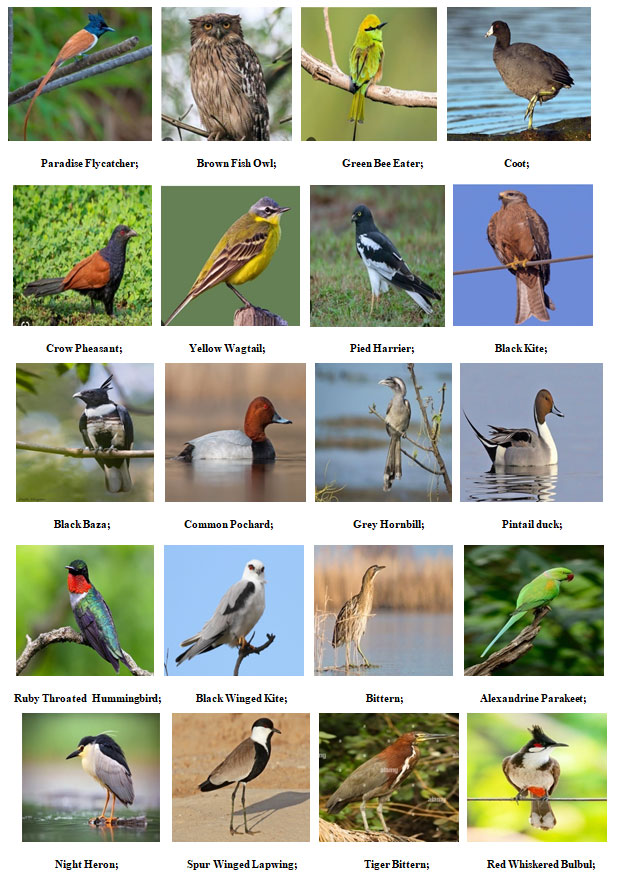
RESULTS AND DISCUSSION
North-East India refers to the easternmost region of India consisting of contiguous seven sister states, Sikkim and parts of North Bengal (district of Darjeeling , Jalpaiguri and Kochbihar) (Javed and Rahmani, 1993). North East India is ethnically distinct from the other states of India, linguistically the region is distinguished by preponderance of Tibeto- Burman languages. Strong ethnic cultures that had escaped sanskritization effects permeate the region. The eight states from a special category is officially recognized (Peralta et al., 2020).
Lumding Reserve Forest is a compact large block of forest, measuring 252.9 sq. Kms and comparatively has less human disturbance. This forest gives shelter to a large variety of floral as well as faunal species (Arya and Rao, 2014). As the forest area of neighbouring Karbi Anglong district and N.C.Hills district are affected by shifting cultivation, the herbs of Asiatic Elephant takes shelter in Lumding Reserve Forest (Joshi and Shrivastava, 2012).
The principal type of forest found in Lumding is degraded moist mixed deciduous forest type (Khan, Rao and Wani, 2012). Lumding Reserve Forest is also habitat for a huge variety of medicinal plants like Sarpagandha, Basaka, Ahoi, Hilikha, etc. Among all the floral species Teak and Gamari are found to dominate in Lumding Reserve Forest (Javed and Rahmani, 1993). Among the climbers, Mikennia sp. predominates where canopy is open and other climbers are Bridelia sp., Butea parviflora, disoscorea sp., Clematis sp. . Himalayan black bear, Clouded Leopard, Crab eating mongoose, Slow loris, Assamese Macaque, Hoolock gibbon, Asiatic jackal,etc. comes under faunal diversity of Lumding.
146 species of birds were spotted from Lumding Forest Reserve area during our survey; Of which, 17 different avian orders including Passeriformes, Columbiformes, Accipitriformes , Piciformes, Bucerotiformes ,Gruiformes, Apodiformes, Coraciiformes, Trogoniformes, Cuculiformes, Galliformes, Ciconiiformes, Suliformes , Pelecaniformes , Strigiformes, Anseriformes, Charadriiformes were detected. Noticably, Passeriformes showed highest species frequency with 46.25% abundance which was followed by Accipitriformes (6.8%), Piciformes and Pelecaniformes(6.12%) ; Columbiformes(5.44%); Galliformes and Charadriiformes(4.76%); Gruiformes, Coraciiformes, Suliformes, Ciconiiformes(2.72%); Strigiformes, Anseriformes(2.04%); Cuculiformes, Bucerotiformes (1.36%); Trogoniformes , Apodiformes (0.68%). Under 17 spotted orders, total 76 families were recorded. Passeriformes came out with maximum number of families (44).
The IUCN status of avian species richness of Lumding revealed that 92.51% birds of Limding are Least Concern indicating their sufficient existance, where as 3.4% are Near Threatened, 2.72% are Vulnerable, 0.68% are Critically Endangered and Endangered. Birds like River tern, Common pochard, Lesser adjutant, Greater adjutant, Indian white rumped vulture, Marsh spotted babbler, Black necked stork , Alexandrine parakeet , Darter which were found under Critically Endangered, Near Threatened, Vulnerable and Endangered category of IUCN demands our attention to work for their conservation and protection from becoming extinct.
CONCLUSION
Its extremely worrying that the number
Comments (0)